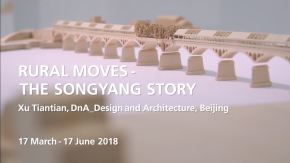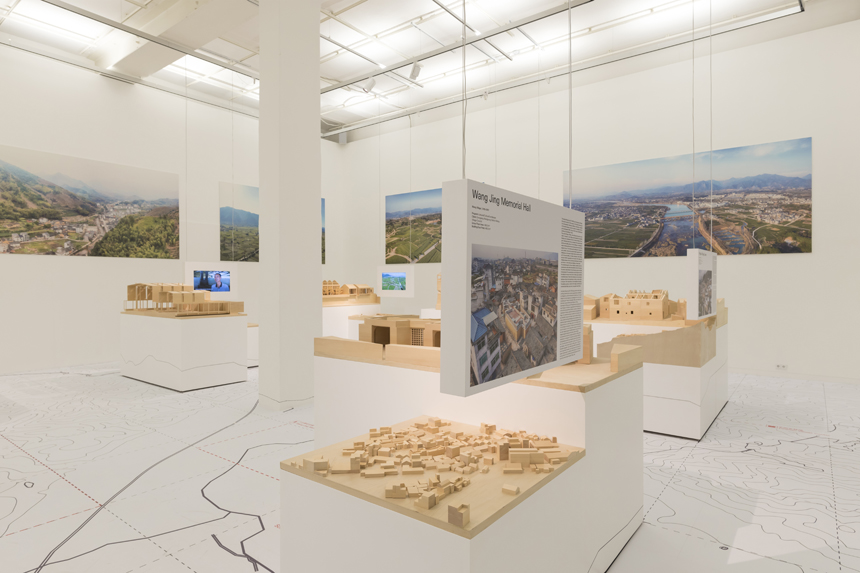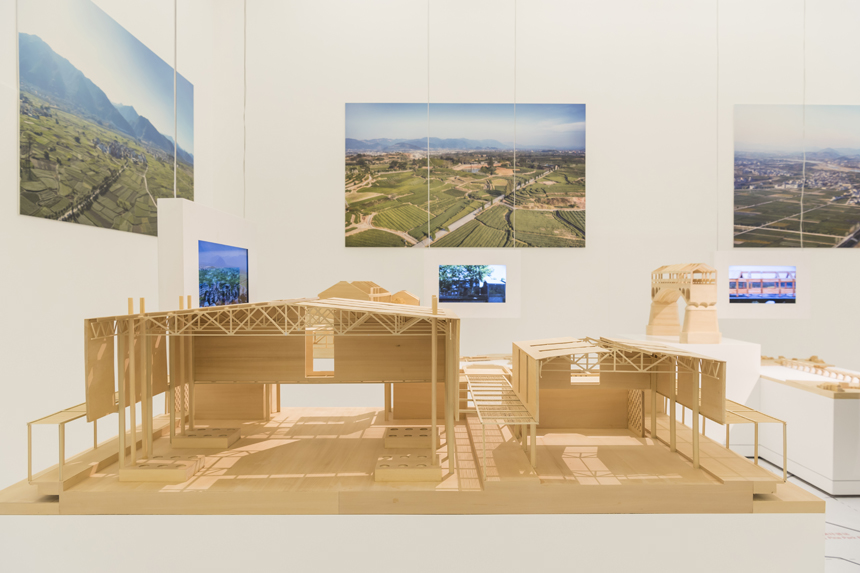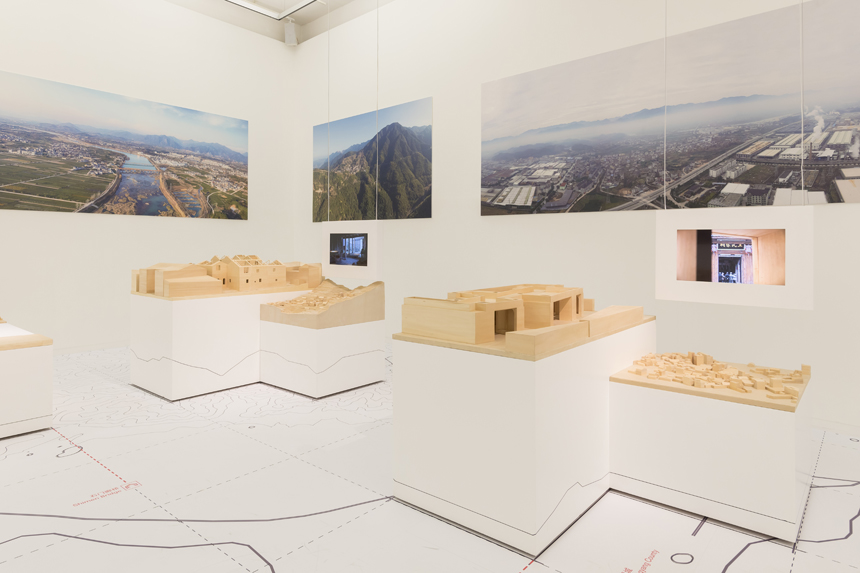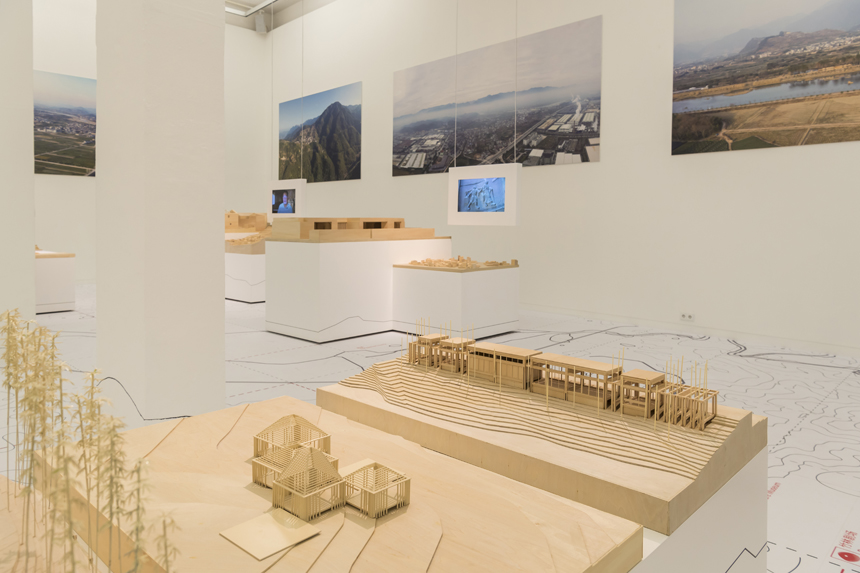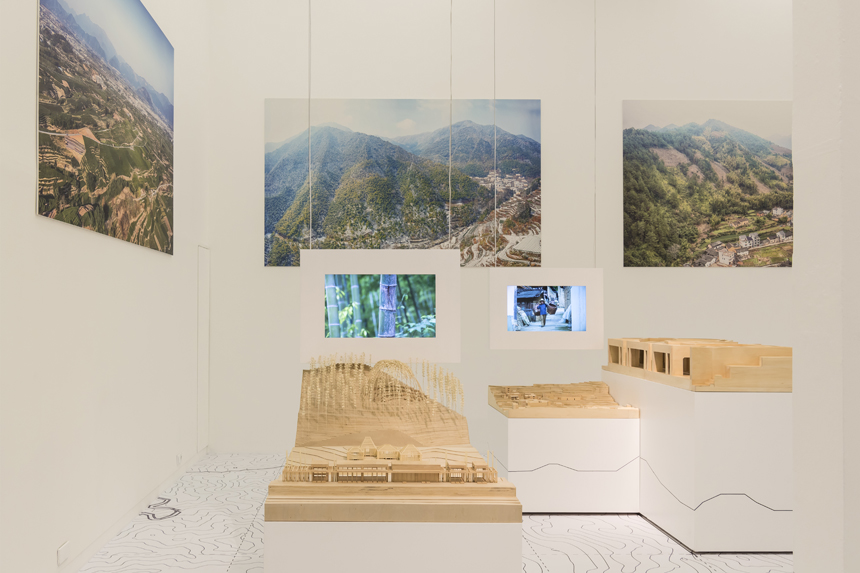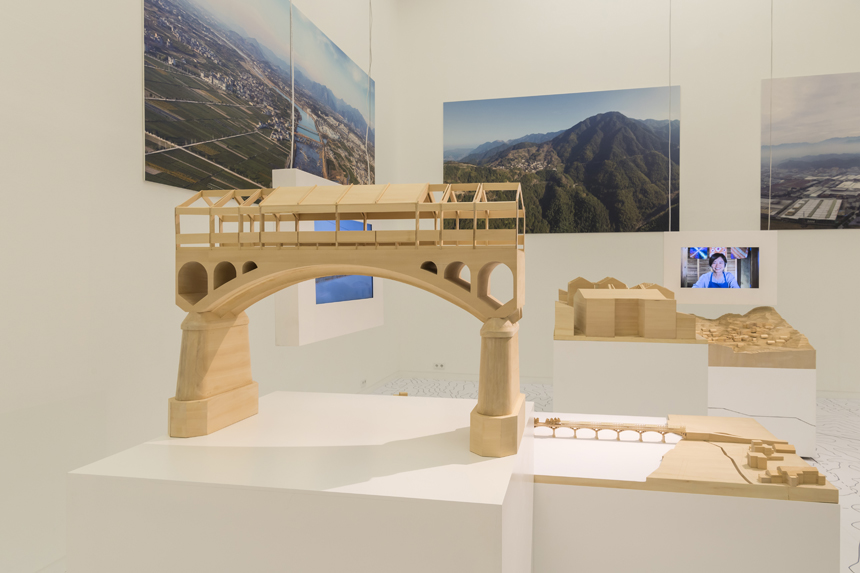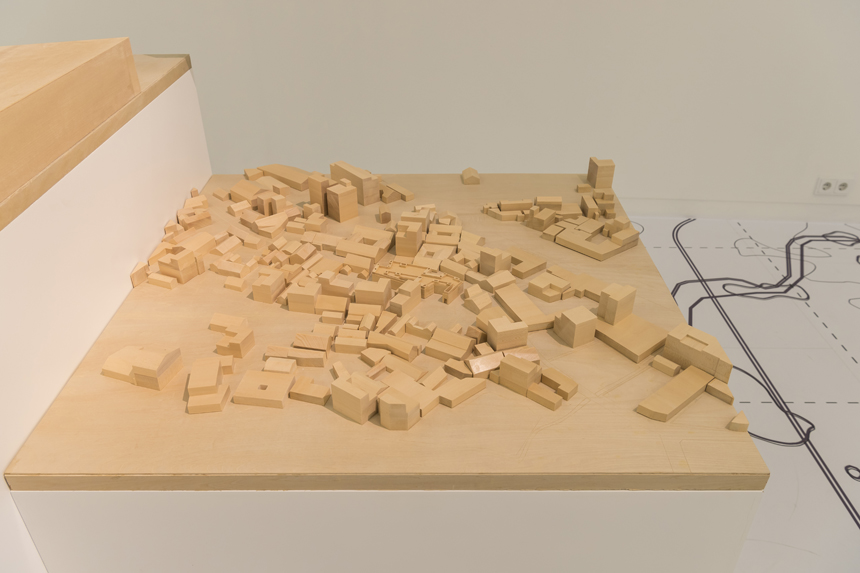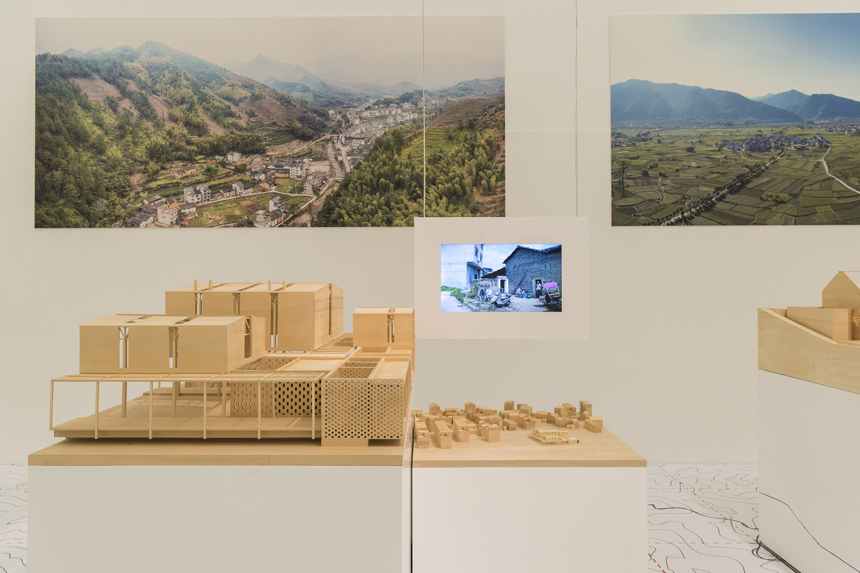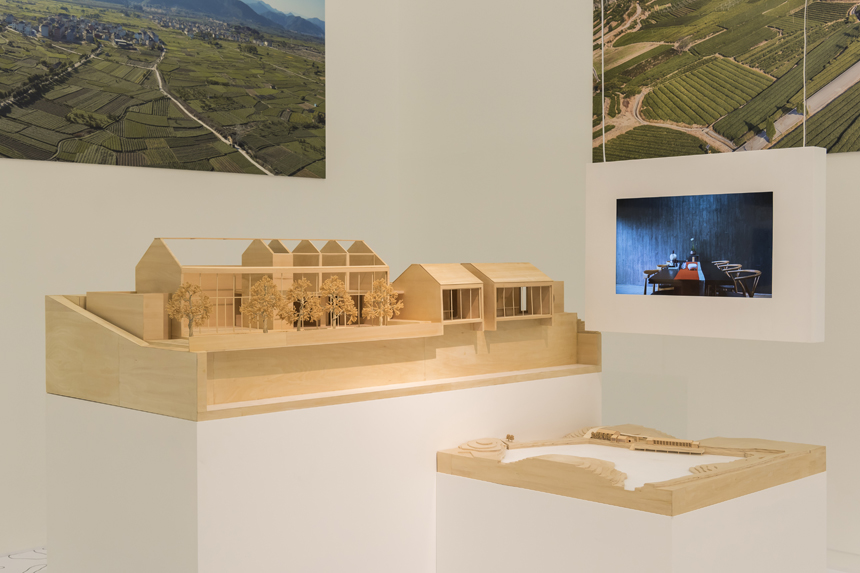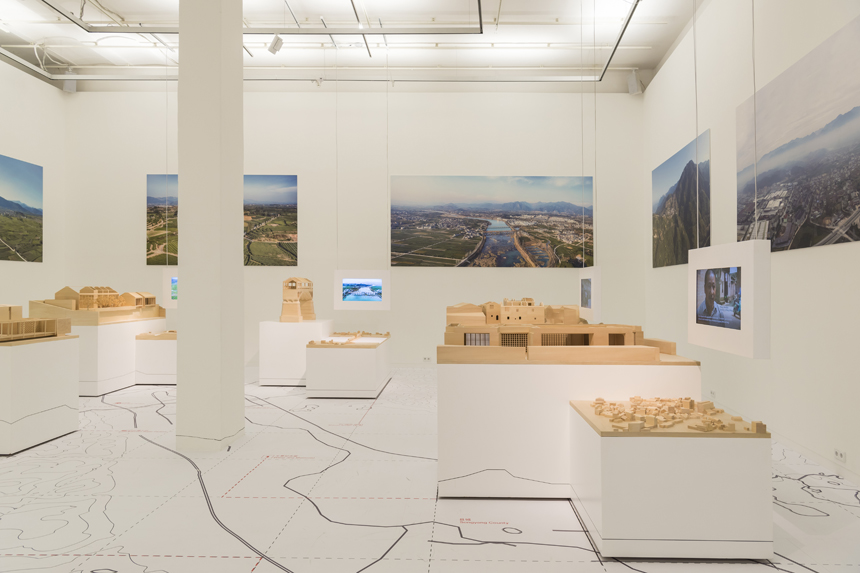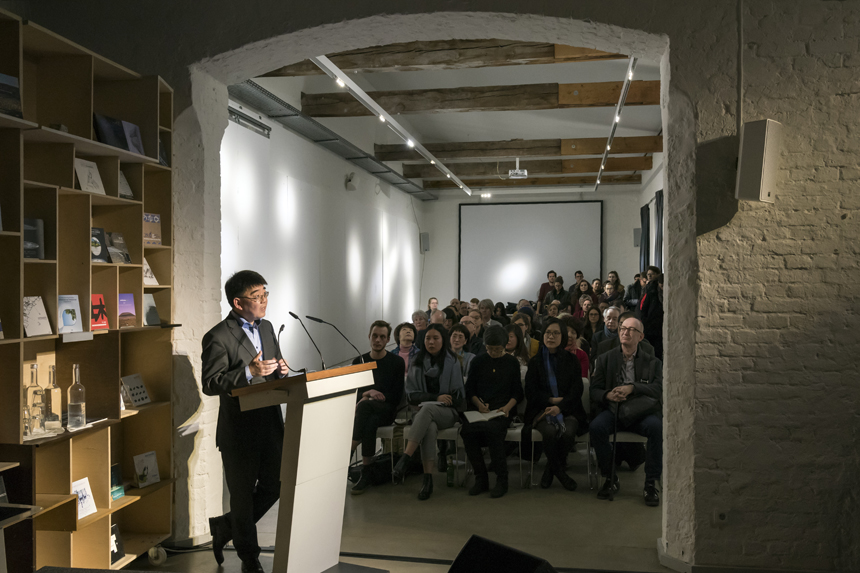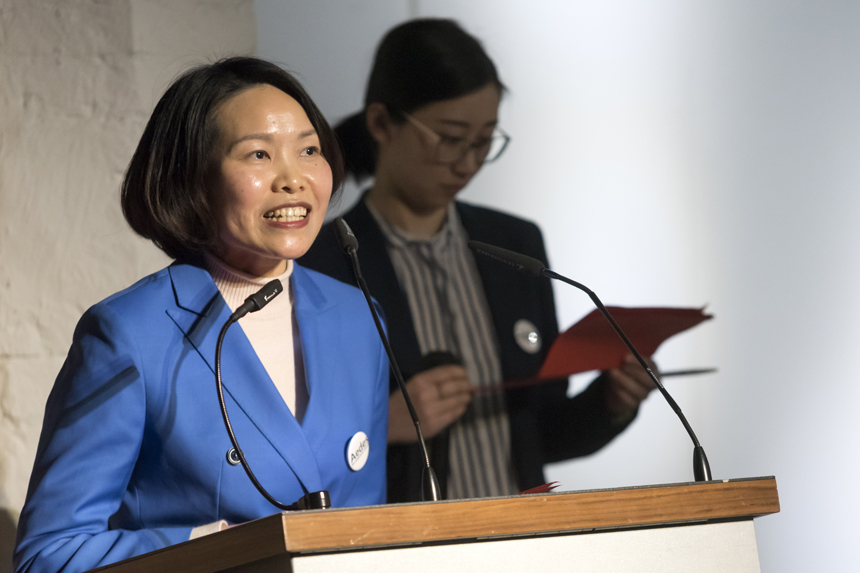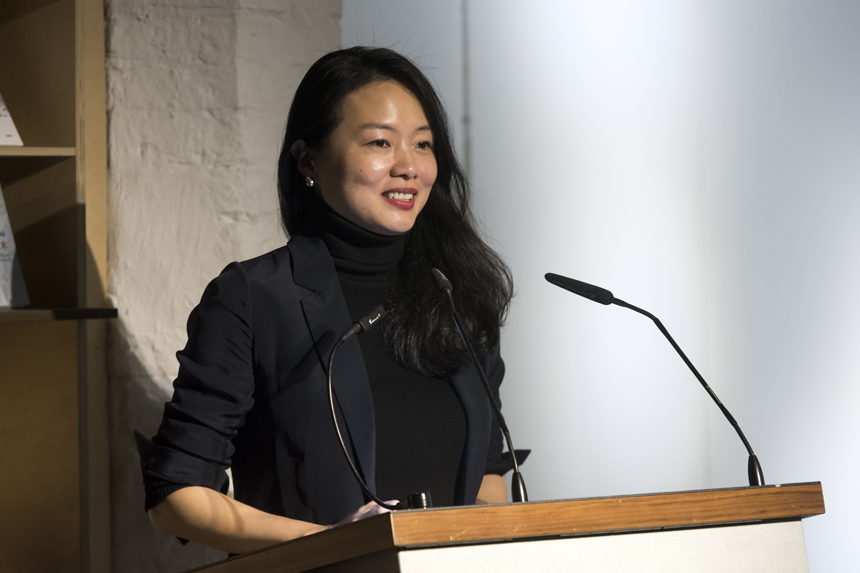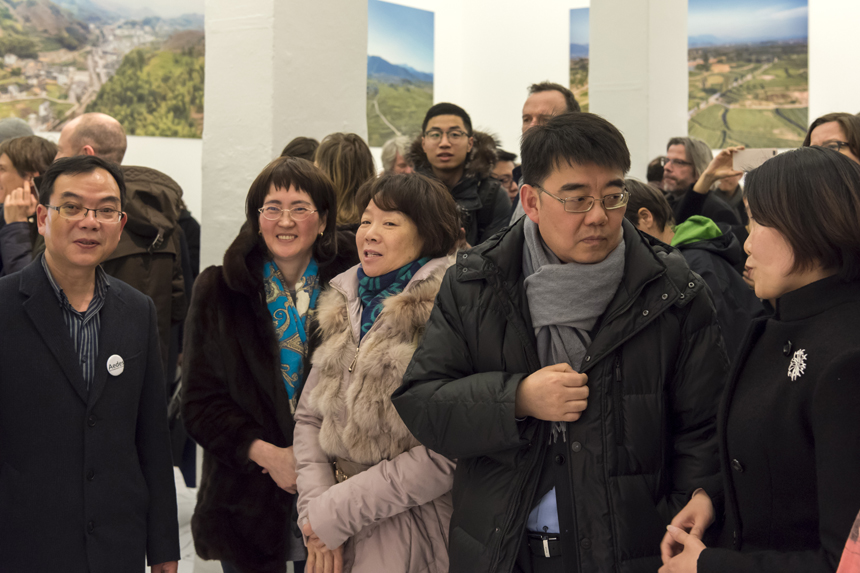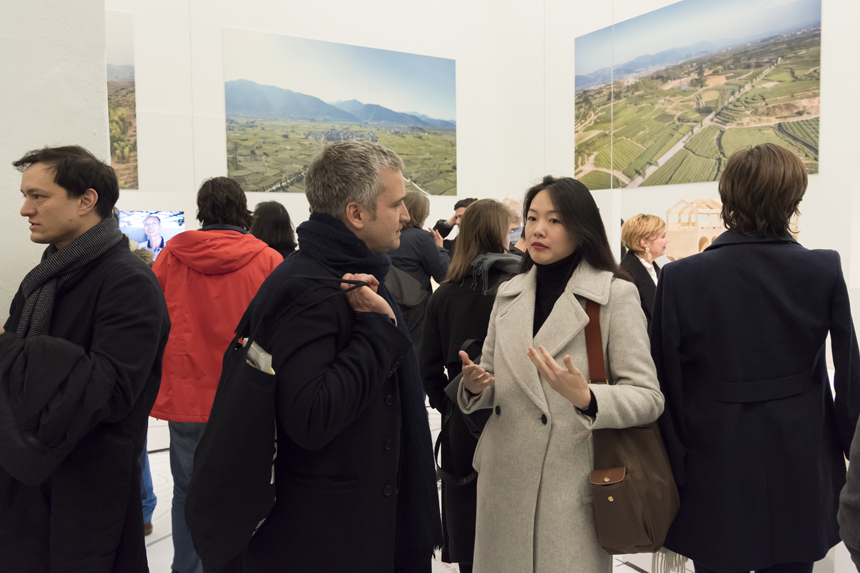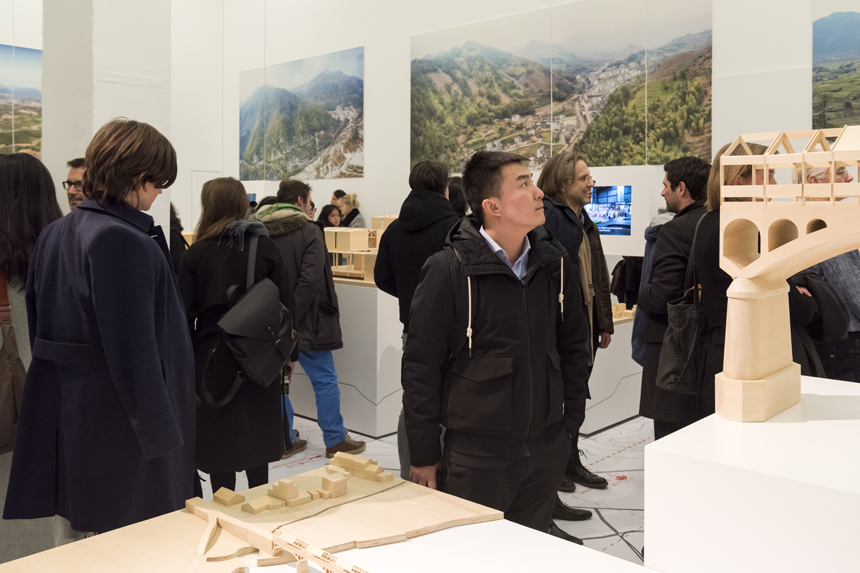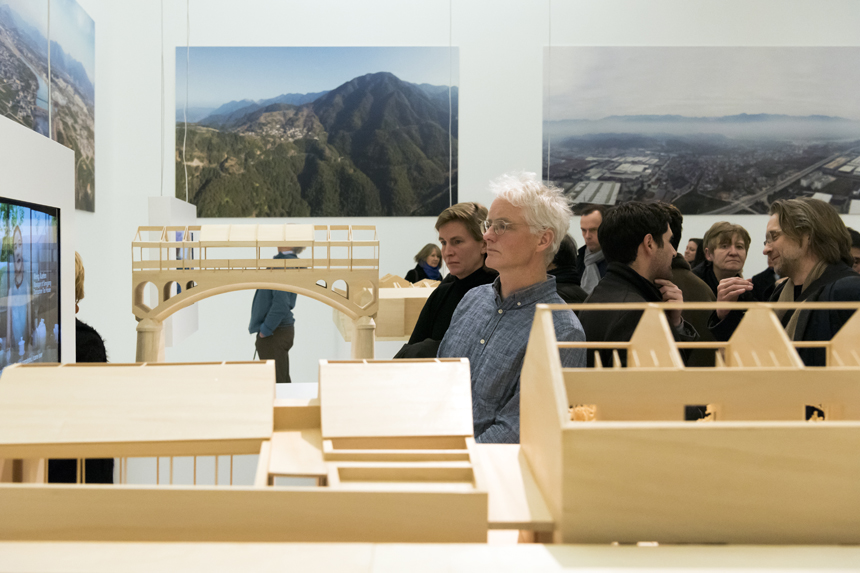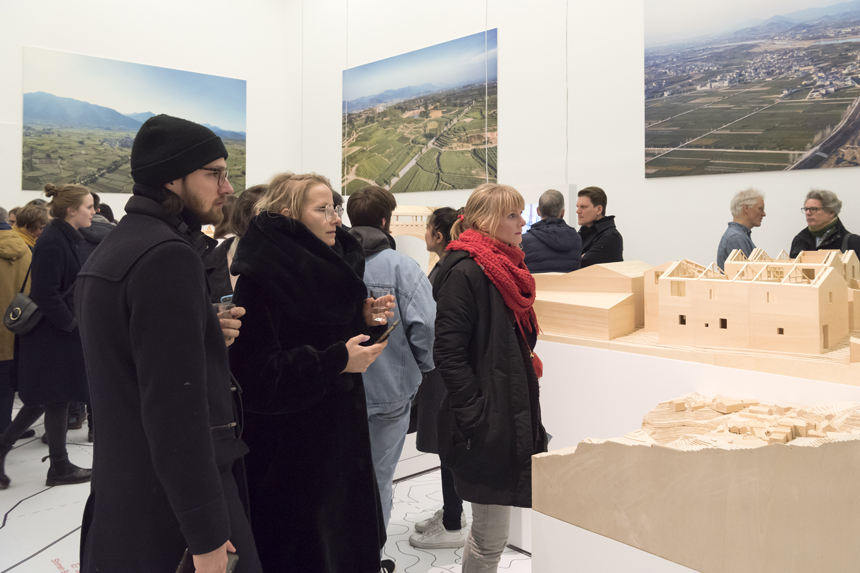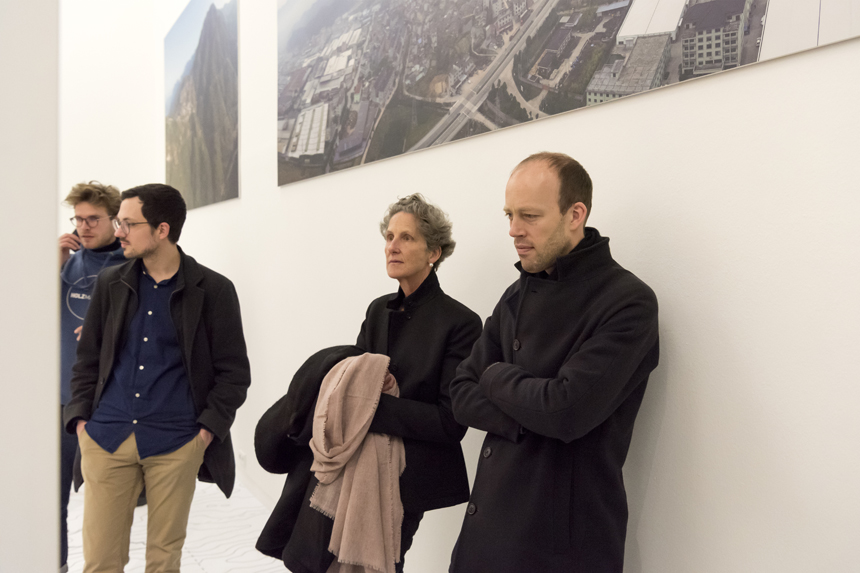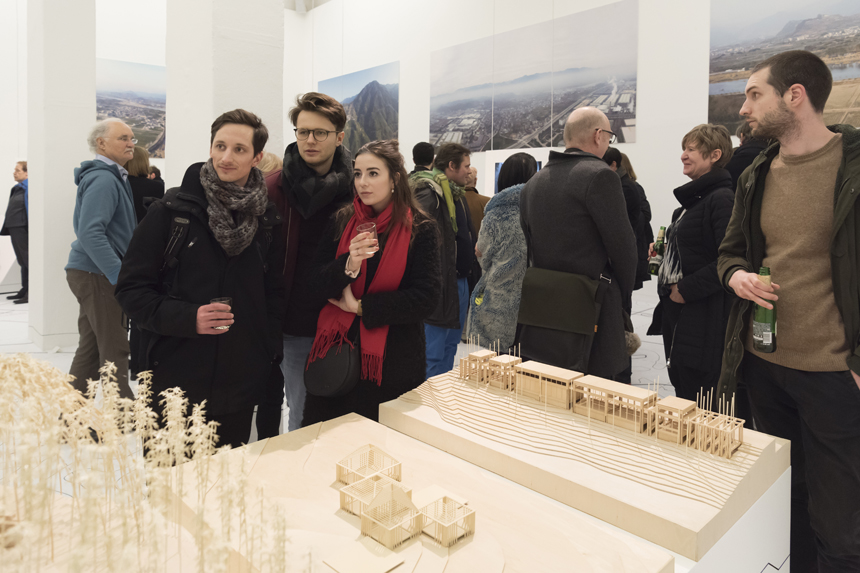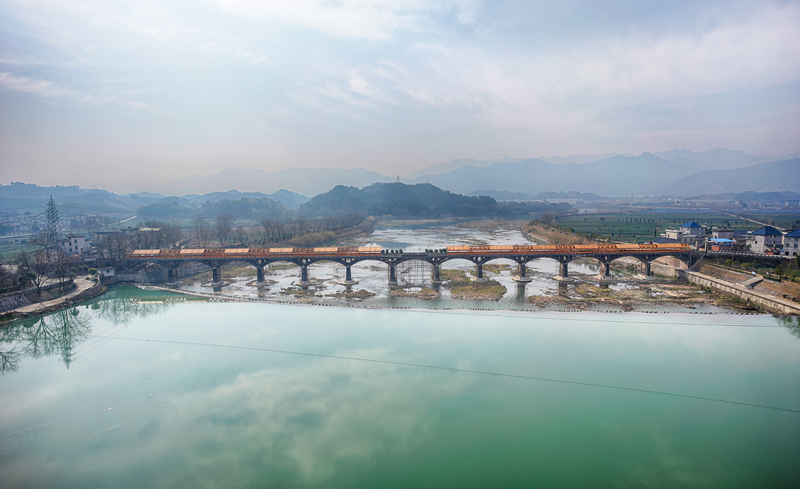Rethinking strategies for rural development is a global pressing challenge. To stimulate the international discussion Aedes Architecture Forum Berlin is presenting a remarkable example from rural China.
Dynamic urbanization processes shape large parts of the world and China in particular. The young population migrates to the cities, whereas many elderly people and children remain in the rural areas. While in the German hinterland railway lines are shut down and the digital infrastructure is more than inadequate, the rural exodus in China is countered with new high-speed train lines and even the most remote mountain villages are being connected by broadband coverage. But also small-scale architecture creates positive future prospects for cultural, social and economic development. In the mountainous landscape of Songyang County, architect Xu Tiantian, in collaboration with the engaged provincial government and local people, developed thoughtful architectural acupunctures that generated a kind of new ’rural self-confidence’.
With Rural Moves—The Songyang Story, the Aedes Architecture Forum is opening a new chapter in the long and friendly relationship that it has been developing with China for nearly two decades as an internationally active cultural institution in Berlin. In the continuation of this reciprocal exchange, Aedes and ANCB The Aedes Metropolitan Laboratory are now exploring China’s countryside. The revitalization of rural regions has been neglected for a long time not only in China, but also in Europe and worldwide, and has consequently given rise to big socioeconomic and political challenges.

Pine Park Pavilion, Huangyu Village, | Brown Sugar Factory, Xing Village, Photos: Wang Ziling
Architecture plays a significant role in the development of large infrastructure programmes and smaller-scale solutions. In China, it has been possible for some years to find remarkable approaches in innovative building processes that incorporate available resources as well as handcraft traditions that have frequently already been forgotten. Even though not all of the experiences gained can be applied directly to conditions in Europe, the examples that Aedes has identified in the region of Songyang provide fascinating impulses for the discussion regarding improving other rural living environments.
The exhibition Rural Moves—The Songyang Story is dedicated to observing the on-going collaboration between the Beijing architect Xu Tiantian (DnA_Design and Architecture) and the municipal government responsible for Songyang, located southwest of Hangzhou in Zhejiang Province.

Hakka Indenture Museum, Shicang Village | Teahouse, Damushan Tea Valley, Photos: Wang Ziling | Bamboo Theatre, Hengkeng Village, Photo: Han Dan
With round four hundred villages, the region extends over the valley along the Songyin River and surrounding mountain areas. The special landscape with its gentle hills, craggy rock faces, rice fields, and tea plantations can be found in traditional Chinese literature and many paintings. Before this impressive backdrop and with this authentic culture, Songyang has already become a popular travel destination in the last three years—above all for residents of big Chinese cities. At the same time, a new, lively socioeconomic structure has developed in recent years as a result of various modernization measures.

Bamboo Pavilion, Damushan Area, Photo: Zhou Ruogu | Wang Jing Memorial Hall, Wang Village, Photo: DnA_Design and Architecture
In order to provide further incentives to ‘remain’ as well as for city residents to return, the government has been working with the architect Xu Tiantian on further strategies for the overall development of Songyang. Besides good accessibility by means of motorways, a connection to the high-speed train network as well as a regional airport are currently being developed as well.
Moreover, it is also possible to find innovative projects such as 'organic farming' or 'sustainable tourism', in which architecture plays an important role. Alone eighty factories that did not comply with the new requirements for CO2 emissions have been closed in recent years as well as partially demolished, and waste separation, which was still hitherto uncommon in China, has even been implemented consistently.

Village Center, Pingtian Village, Photo: Han Dan | Shimen Bridge, Shimen Village, Photo: Wang Ziling
Xu Tiantian has already realized a wide range of architectural interventions on a micro-level in cooperation with the respective village communities, the municipal government, and local craftspeople. These include, among other projects, the ‘Brown Sugar Factory’ in Xing Village, the village community centre in Pingtian Village, and a teahouse and a pavilion in Damushan Valley. The architect found her inspiration for the designs of all of the buildings in the built history of Songyang, and supplemented it with additional elements and contemporary functions. This has consequently led to dynamic and organic growth in the rural region and offers the new generation of modern rural residents concrete perspectives.
Rural Moves—The Songyang Story presents nine projects that have been realized and elucidates them with models, plans, and photographs as well as by means of a film installation that presents the new architecture and the culture and history of the people of Songyang.
Brown Sugar Factory | Xing Village | 2015–16
Program: Workshop/Exhibition
Client: People's Government of Xing Village, Songyang County
Structure System: Steel Structure
Gross Floor Area: 1233.92m2
Building Foot Print: 1309.41m2
The village of Xing is located on the central level of the Songyin River. The region is important for the cultivation of sugarcane and the production of brown sugar, which is also the village’s primary source of income.
The new community building is located on the edge of the village, at the transition to fields used for agriculture, and replaces private workrooms, which no longer satisfied technical requirements. It consists of several building elements, which accommodate different functions and are connected to each other by corridors. The completely transparent ground floor links the work zones to the fields and the neighbouring village structure. The main room with the ovens is, however, actively used for sugar production only in the three winter months between October and December. It was therefore important to design the building in such a way that the village community can use it for other activities. Older inhabitants meet there during the day for tea, and films are shown or the local puppet theatre gives performances in the evening. The building has therefore given rise to a new sociocultural life, which assists in defining its identity anew.
The transparency between the different building elements and the unobstructed view of the processes involved in the production of brown sugar also make the building an attraction for visitors. The reduced materiality of bricks, steel construction, glass, and corrugated sheet metal creates a workroom that takes the cultural concerns of the village community into consideration. As an expression of contemporary production and as a social meeting place and space for culture, the architecture shapes the social community in the village in a sustainable way. Here, the village’s self-conception takes on a new form beyond traditional concepts.
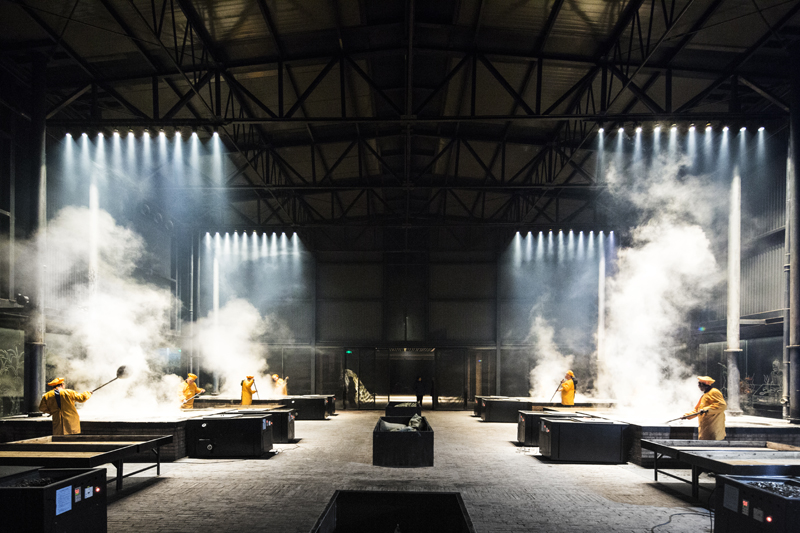
Pingtian Village Centre | Pingtian Village | 2014–15
Program: Museum/Workshop
Client: People's Government of Sidu Village, Songyang County
Structure System: Timber Structure
Gross Floor Area: 307.7m2
The village of Pingtian is situated on a mountain ridge and consists mostly of rammed earth structures with traditional wood construction on the inside. The houses are grouped organically along the topography and can be accessed on foot by means of stairs and very narrow alleys.
For the programme of an exhibition about traditional agricultural equipment and a handcraft centre, the architect Xu Tiantian proposed repairing parts of one group of buildings and organizing other parts so that the old building substance satisfies contemporary requirements through gaining new amenities. The L-shaped exhibition spaces for agricultural equipment on the bottom level can be accessed from two sides. The exhibition space situated on the upper storey can be accessed from the higher-lying alley at the back and is also connected with the building situated next to it, which young designers use as a workshop for indigo dye. The workshop building was created from two identical houses standing close together, which are now connected by means of a newly installed skylight. Two space units available for rent were created on the top storey, from where the eye can wander over the village and landscape.
The handling of existing structures, which was new for the local craftspeople, provoked resistance that had to be overcome in arduous discourse. In many cases, expectations in the village with respect to new materials and new forms of expression—frequently from the urban context—have resulted in the destruction of the historically matured culture of form and material. In the case of this example in Pingtian, the architect succeeded in persuading the local population that, using local means, it is possible to come up with a contemporary solution that both takes their needs into account and preserves the identity of the village as well.
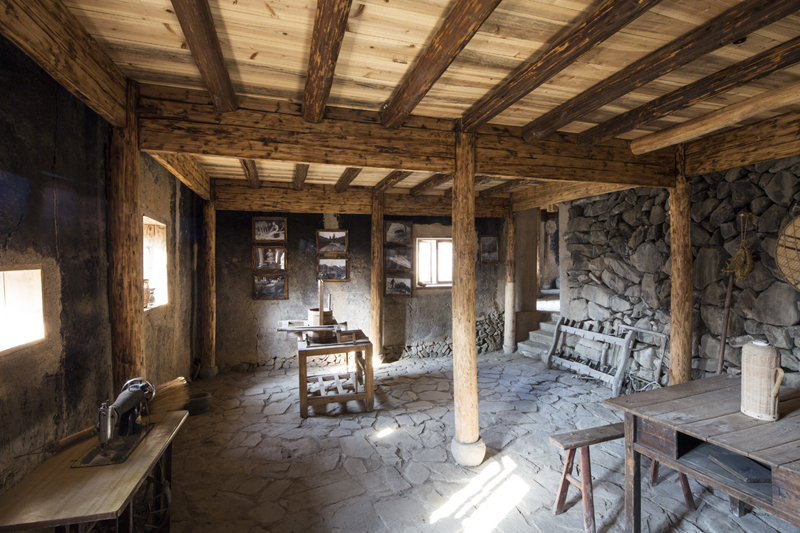
Wang Jing Memorial Hall | Wang Village | 2016–2017
Location: Wang Village, Songyang, Lishui, Zhejiang Province
Program: Leisure/Culture/Landscape
Client: Songyang Wangsong District Wang Village Council
Gross Floor Area: 406.2m2
Building Foot Print: 406.2m2
The scholar Wang Jing (1337–1408) rose to become an influential scholar under the first emperor of the Ming Dynasty due to his extraordinary intellectual abilities. He became a member of the Hanlin Academy and was involved in compiling the Yongle Encyclopaedia (1408), the up-to-then most comprehensive summary of knowledge in China.
The current village of Wang, where Wang Jing was born, decided to construct a new village centre opposite the ancestral temple so as to remember the life of its famous forebear. The region’s historical trade route runs between the ancestral temple and the new building. Most of the old buildings in the village are made of rammed earth and have an internal wood structure that supports the roof. The rammed earth buildings are, however, in poor condition, and even the ancestral temple opposite the new building was on the verge of collapse before it was then renovated.
For the new building, Xu Tiantian developed a linear building structure that fits organically into the layout of the village and mediates between the old, one-storey rammed earth structures and the two- to three-storey new buildings of recent years.
The constructive spirit of the new building comprises open concrete elements, which define the seventeen corners of the layout. The exterior walls between the load-bearing corners are made of rammed earth. The constructional corners let light and air into the building from above. Here, the life of Wang Jing is presented in seventeen scenes. Thanks to this building, the old construction technique and local craft experienced a revival, as is also shown in the case of other restorations in the immediate surroundings. The building is used as a centre for the village community and commemorates Wang Jing, who is once again revered today.
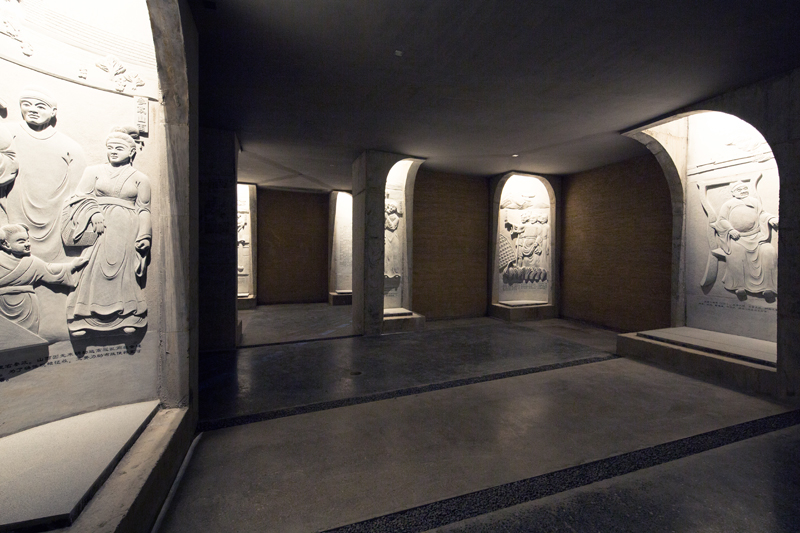
Bamboo Pavilion | Damushan Area | 2014–15
Type: Pavilion
Client: Songyang Country Tourism Development Co., Ltd.
Between the tea fields in the Damushan area run narrow, paved paths that provide access to the tea plantations and serve as infrastructure for local tourism. Visitors can glide through the elegant rolling landscape with electric vehicles and bicycles and enjoy the view of the surroundings at selected locations. For several new viewing platforms, Xu Tiantian developed a system of pavilions, consisting of a simple bamboo structure, that are positioned additively, in various sizes, on the periphery of the tea plantations. With allusions to slanted roofs, the groups of buildings call to mind the silhouette of historical hamlets in an abstract way. As focal points in the vast green expanses of the tea fields, the transparent structures provide a framework that is also used for temporary cultural events. Through drawing a new picture of the tea plantation landscape as an ambassador, this, Xu Tiantian’s first commission, became an important vehicle for promoting the renewal of the area.
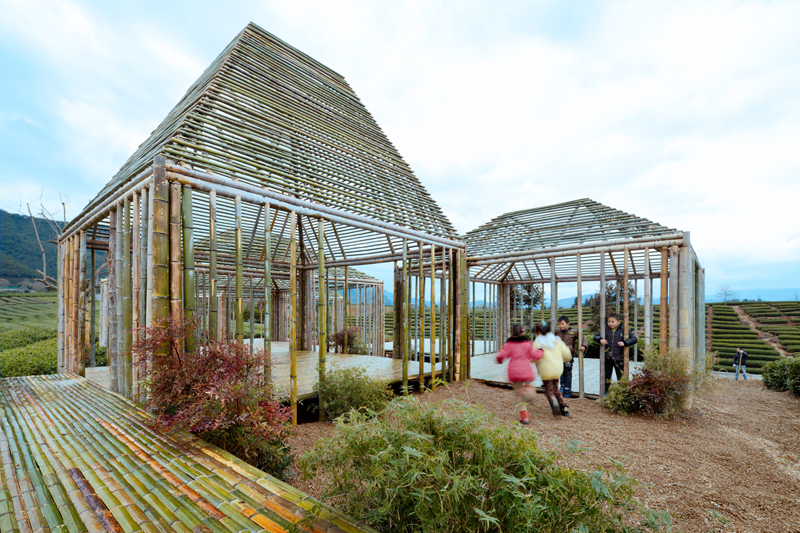
Teahouse | Damushan Tea Valley | 2015
Program: Tea House/Tea Art Training
Client: Songyang Tourism Development Co., Ltd.
Structure System: Shearing Wall
Gross Floor Area: 477.75m2
Building Foot Print: 372.83m2
The tea gardens in the Damushan area of Songyang are situated in a hilly landscape before the backdrop of imposing mountains. The tea plantations extend over the ridges of the hills in smooth sweeps and have shaped the landscape space with their linearly planted bushes for centuries.
The Xujing pool was constructed between the tea plantations for irrigation purposes in 1968, and was later equipped with a circular path for pedestrians. At the edge of the pool, Xu Tiantian designed a teahouse for visitors, from which the view over the pool stages the scenic charms. The new building is embedded linearly between the edge of the pool and the boundary of the site in such a way that it was possible to preserve five large sycamores, which provide the forecourt with shade thanks to their leafy canopy. The difference in the height of the terrain between the path and the edge of the pool is now filled with the new teahouse, which disappears between the trees and the natural topography.
The tea pavilion, which was erected using black-dyed concrete, consists of a series of different spaces. The two-storey, open main room has a skylight and a glass front towards the pool. The owner here imparts aspects of tea culture and a contemporary form of the tradition that also attracts interest in urban centres. Connected to the main room are spaces for private tea ceremonies. At the periphery follows the meditation room, through whose round opening, the sunlight reflected by the surface of the water enlivens the interior space. Small courtyards and views, which raise awareness of both the landscape and aesthetic phenomena of nature, interrupt the sequence of spaces. The building itself is so well embedded in the landscape situation that the spectacular view first becomes apparent from the interior: the pool in the foreground serves as a mirror for the tea garden and the mountain scenery in the background.
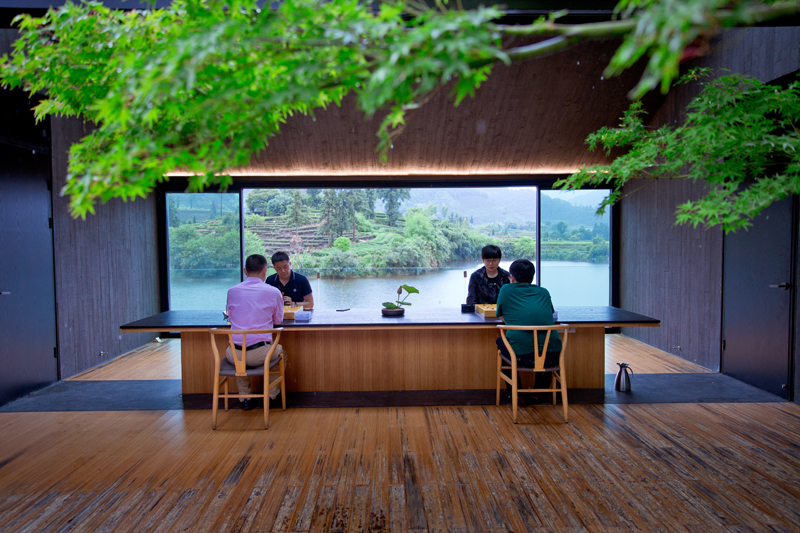
Bridge | Shimen Village | 2017
Program: Leisure/Culture/Landscape
Client: Songyang Public Road Administration
The bridge over the Songyin River links the two villages of Shimen and Shimenyu. The existing stone masonry bridge with its characteristic arches comes from the 1950s and is today closed to vehicles. With the renovation and upgrading of the bridge, Xu Tiantian designed a social location that unites the two previously connected villages from a cultural perspective. What has consequently been created is a roofed-over bridge space that calls to mind the historic Wind and Rain Bridge. The cultural-historically relevant dam system, which has regulated the waters of the Songyin River for 1500 years as part of a larger system, is situated in the river.
The architect designed a simple wooden structural element, which defines the new space with its additive sequence. In the middle, a square planted with trees invites spending time. The visual connection to the river, but, even more, the cultural elevation of the bridge, assists the two neighbouring villages in defining a shared cultural space that makes it possible to experience their historical link in a new way.
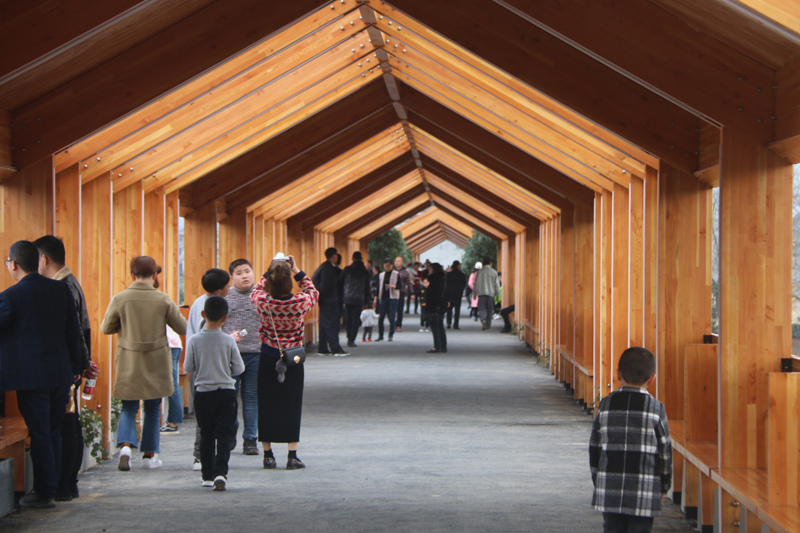
Hakka Indenture Museum | Shicang Village | 2016–17
Program: Leisure/Culture/Landscape
Client: Songyang Dadongba County Government
Gross Floor Area: 2573.57m2
Building Foot Print: 674.5m2
The village of Shicang, whose residents belong to a Hakka ethnic group, is located in a narrow valley in the south of Songyang County. The Hakka are also referred to as ‘guests’, since they migrated here as refugees from northern regions in the past centuries. They have retained their special status until today, which is characterized by the strong internal cohesion of the group.
The name of the village of Shicang can be translated as stone storage, which in turn refers to a legend, according to which there was a magical cave filled with grain, from which the residents were able to supply themselves. Greedy inhabitants allegedly broke open the cave, which consequently lost its ability to produce grain. In place of the grain, it was afterwards only possible to find stones.
To commemorate this story, which gave the village its name, Xu Tiantian developed a building that takes up the local construction of bridges and residential buildings. Coarsely hewn stones are layered in a wild lattice to create massive walls that continue the slope on the edge of the village out into the landscape. The architecture is connected with the landscape by means of various sequences of spaces both inside and out. An already existing irrigation channel was guided over the roof and provides water, which, on particular days, is sprayed by nozzles to create a water curtain on the inside. By means of a linear opening in the roof, sunlight falls on the water curtain, where a rainbow forms. This temporary phenomenon attracts visitors, who then enliven neighbouring villages as well. The museum itself has no controlled access and only exhibits copies of, in part, several-hundred-year-old Hakka indentures. The inspiration from the local legend situates the museum, with which both craftsmanship and material culture have been revitalized.
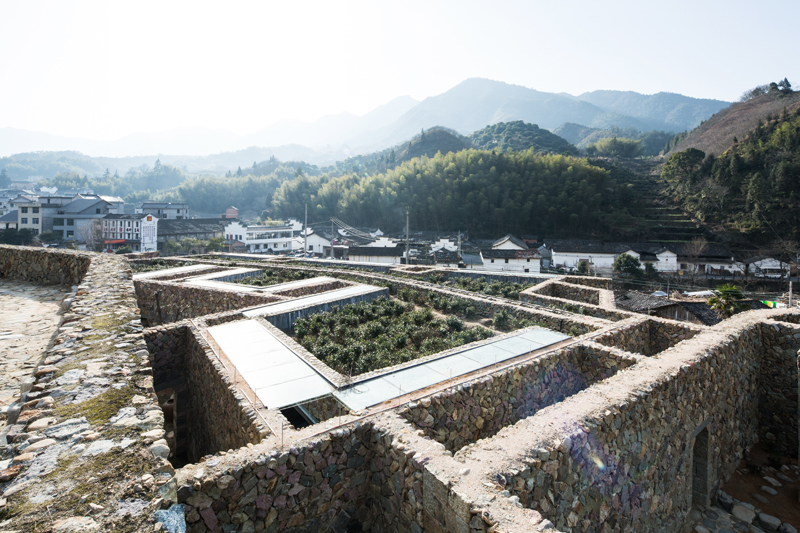
Pine Park Pavilion | Huangyu Village | 2017
Program: Leisure/Culture/Landscape
Client: Songyang Department of River Control and Reservoir Management
Gross Floor Area: 315.65m2
Building Foot Print: 197m2
The pavilion stands next to the village of Huangyu on a paved connecting path along the Songyin River as a tourism infrastructure that enables cyclists and hikers to experience the region. The wooden structure consists of prefabricated elements, which were assembled on site, and accommodates an art installation presenting the historical production of pine resin in the neighbouring village of Huangyu. The elongated pavilion consists of four segments. The building elements are separated with glass surfaces, on which the production of resin is illustrated in an artistically alienated manner, thus giving rise to one picture in combination with the already existing group of trees around the pavilion. The simple wooden building with its clear constructive structure serves as a resting place at the dam on the river and provides information about a traditional method of producing resin. It consequently combines information about the location with a tourism infrastructure that links history and future for visitors in a playful manner.
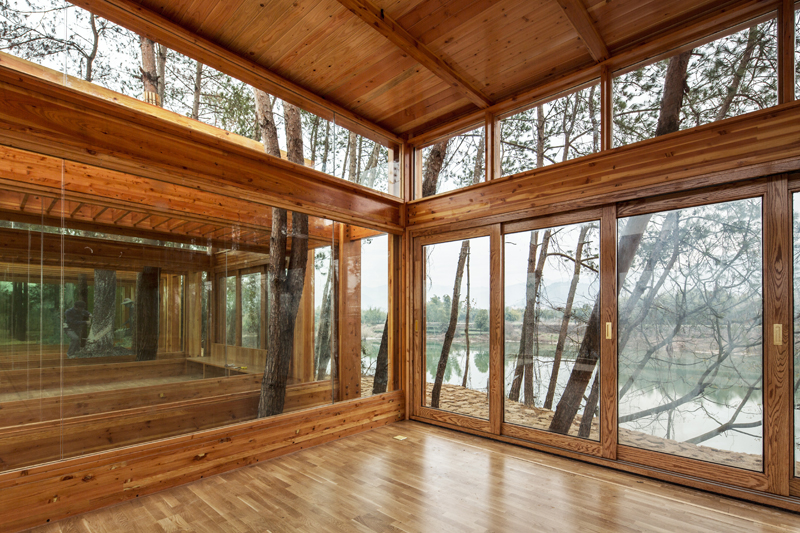
Bamboo Theatre | Hengkeng Village | 2015
Program: Leisure/Culture/Landscape
Client: Songyang Tourism Development Co., Ltd.
Bamboo is a quickly growing grass that is found in every garden in China and as sparse woodland in many hilly regions. The importance of bamboo in Chinese culture arises from a range of qualities such as its flexible structure, the sparkling green lighting effect that a bamboo grove engenders, its many varieties, and its technical properties as a material. For the village of Hengkeng, Xu Tiantian designed a theatre stage that is inspired by an historical account.
For the construction of the bamboo dome, the architect used a low-tech approach that takes the rapid growth and bendable quality of the material into account. Once installed, the growing dome requires little regular maintenance: younger bamboo sprouts are woven into the existing dome and old poles are removed. This bioorganic architecture in natural surroundings facilitates activities ranging from village opera performances to individual meditation in nature.
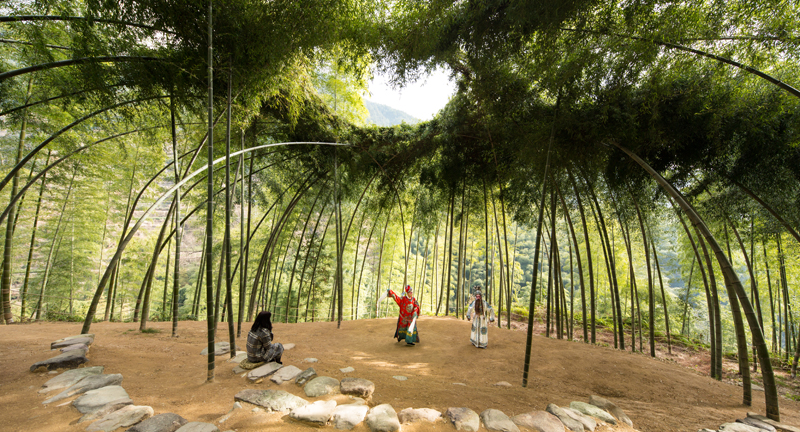
Aedes Catalogue
German/English
€ 10
Catalog Order
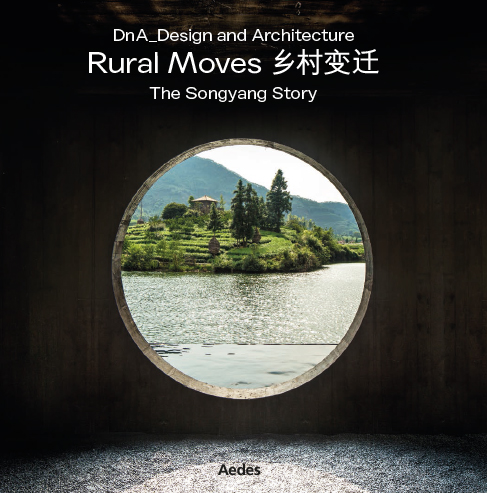
Aedes Catalogue
German/English
€ 10
Catalog Order
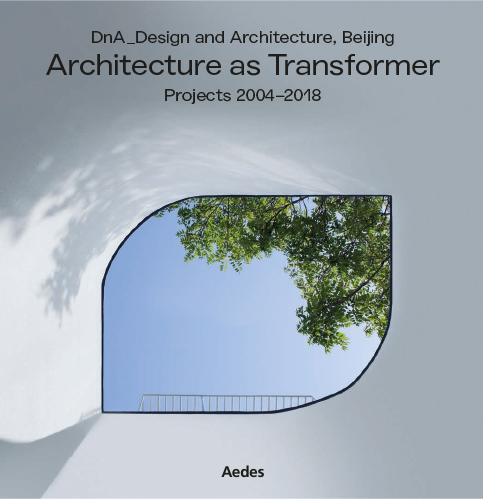
For the support we thank:
The People’s Government of Songyang County, Songyang Cultural Bureau, Zhejiang Xinhu Foundation


